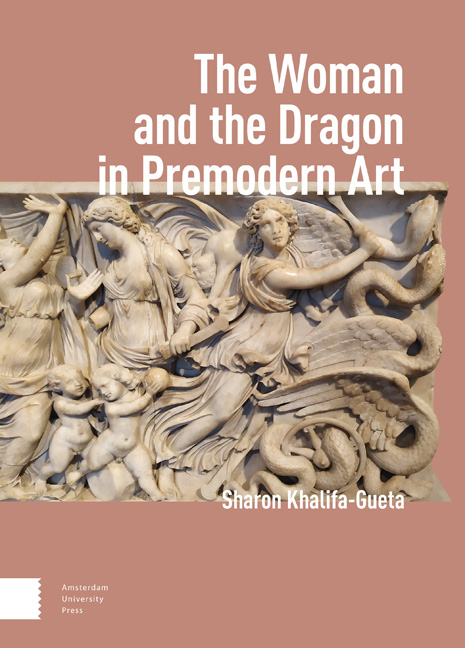Book contents
- Frontmatter
- Contents
- Acknowledgments
- Introduction
- 1 The Dragon
- 2 The Cave and the Womb: The Myth of Cadmus and the Myth of Apollo and Python
- 3 Eligible Wives and Monstrous Women: Andromeda and Medusa
- 4 Medea – The Holy Woman and the Witch
- 5 Eve and Lilith — Christianizing the Great Goddess and the Dragon
- 6 Saint Margaret – Taming the Dragon
- Conclusion
- Bibliography
- Index
- Frontmatter
- Contents
- Acknowledgments
- Introduction
- 1 The Dragon
- 2 The Cave and the Womb: The Myth of Cadmus and the Myth of Apollo and Python
- 3 Eligible Wives and Monstrous Women: Andromeda and Medusa
- 4 Medea – The Holy Woman and the Witch
- 5 Eve and Lilith — Christianizing the Great Goddess and the Dragon
- 6 Saint Margaret – Taming the Dragon
- Conclusion
- Bibliography
- Index
Summary
What could a Libyan princess, a Corinthian witch and a female saint from Antioch possibly have in common? Although these figures may well appear unrelated, they all share a similarly intimate acquaintance with dragons. Engaging in an in-depth exploration of representations of Andromeda, Medea, St. Margaret, and additional mythological figures, this book seeks to elucidate visual manifestations of the motif of the woman and the dragon, whose roots go back to Near Eastern, ancient Egyptian, neo-palatial Minoan, and Greco-Roman antiquity. Yet despite its rich and complex history, this motif has received almost no attention as a distinct topic worthy of scholarly examination, and has been largely subsumed into the study of male dragon-slayers and their representations. By shifting the spotlight to the female protagonists of these archetypal visual narratives, the current study offers a different perspective, delineating the unique meanings pertaining to their relationships with dragons. One of the most remarkable aspects of such relationships is that, in contrast to their male counterparts, women do not fight dragons. Instead, they are depicted as communicating, collaborating, assimilating into, and fusing with these mythological creatures, in ways that are both benevolent and malevolent.
At the core of this investigation is the revelation that the encounter between women and dragons is a holy one, which long predates the dualistic Christian conception of good and evil and the association of dragons with the latter category. Nevertheless, as the discussion unfolding throughout the book will reveal, this pagan conception of the relationship between women and dragons in Mediterranean antiquity endured in Western Europe throughout the early modern period.
In analyzing each of the figures and situations examined in the course of this study, I attend both to the meaning of this union, and to the individual significance of each, while questioning the nature of their relationship. As this book reveals, dragons are closely related to great fertility goddesses, and are thus associated with ancient matriarchal concepts that continued to influence and challenge patriarchal structures over the course of many centuries. As the analysis focuses on visual representations and material culture, this motif shows the interaction between the two is one of communication, collaboration, assimilation, and even fusion, but rarely animosity.
- Type
- Chapter
- Information
- The Woman and the Dragon in Premodern Art , pp. 9 - 22Publisher: Amsterdam University PressPrint publication year: 2023

